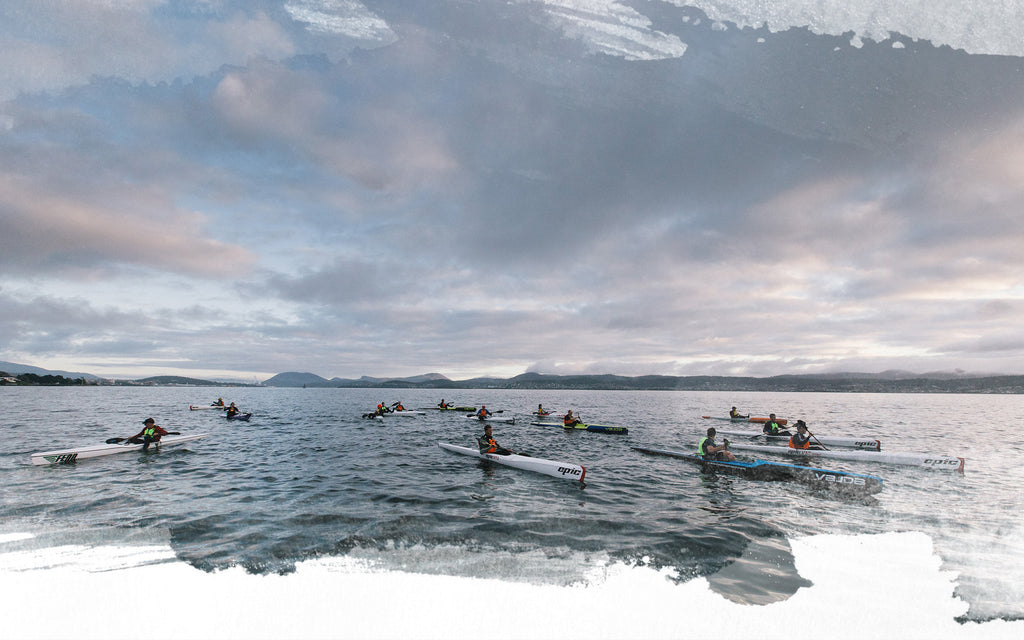Diamonds - a paddler’s best friend!

Most coaches would be stoked to improve their paddlers by 20-30% over a whole career, let alone in a few months. But these sort of gains are possible, and the good news is you don’t need to perform a mountain of physical work to achieve them, you just need to work on your skills, boat handling and change of pace. We’re talking about the art of washriding, the intricate “dance” performed in diamond formation by paddling packs the World over during training and racing. Like any paddling skill WASHRIDING IS TRAINABLE and it’s your ticket to a guaranteed faster time. So how much energy will washriding save you and what’s it all about?
In a 1998 study by Perez-Landluce et. al. published in the Journal of Medicine and Science in Sports and Exercise, several paddlers were put through their paces in one of 4 possible “diamond” washriding positions - head (H), right wave (RW), left wave (LW), and end position (V) - see picture below - and equivalent intensities on kayak ergometers.

The key findings were:
- Being in the RW and LW positions halved blood lactate levels, and being in the V position reduced them to 30%
- When H paddlers were operating at anaerobic threshold (a pace that in most paddlers can only be sustained for 40 to 45 minutes), RW and LW paddlers were operating aerobically at paces sustainable for 1.5 hours, while V paddlers were operating aerobically at a pace sustainable over many hours
- At the intensities above, H paddlers rated their exertion levels at 15 out of 20, compared to RW and LW paddlers at 12 or 13 out of 20 and V paddlers at 10 out of 20
- At these intensities, H paddlers were generating 190 watts, compared to RW and LW paddlers at 155 watts, and V paddlers at 130 watts
- At these intensities, H paddlers were paddling at 94 strokes/minute, compared to RW and LW paddlers at 89 strokes/minute, and V paddlers at 87 strokes/minute (not much of a difference per minute but it’s a lot of strokes saved over longer time periods)
- At these intensities, H paddlers were using 3.8 litres of oxygen every minute, compared with V paddlers at 2.2 litres
- The authors concluded that washriding involves a saving in energy of 18% in positions RW and LW and 31.9% in position V. In headwind or oncoming current conditions (the study above was done on flatwater and using kayak ergometers) the savings could be even greater
You can read the full study abstract here.
What’s this all mean for the majority of Tassie paddlers? Well, a whole host of the most popular paddling races in Tasmania begin with mass starts of 50-200 competitors, presenting opportunities for washriding from the get-go. The Northern and Southern Winter Series, the Endurance Series and Summer Series, the Icebreaker Multisport, Winter Challenge and Freycinet Challenge (day 2) are just a selection of these. Paddlers who are comfortable racing in diamond formation will always go faster (often by several minutes over an hour-long course) than ones who plug away on their own. If you’re a solo multisport competitor, washriding during the paddle leg will also conserve much-needed energy for the other disciplines.
So, more than once in a while, instead of grinding away on your own to improve your “engine” and gain that extra fraction of a %, why not work on your washriding skills, practice your “diamonds”, and take advantage of the sort of gains uncovered by the Perez-Landluce study.